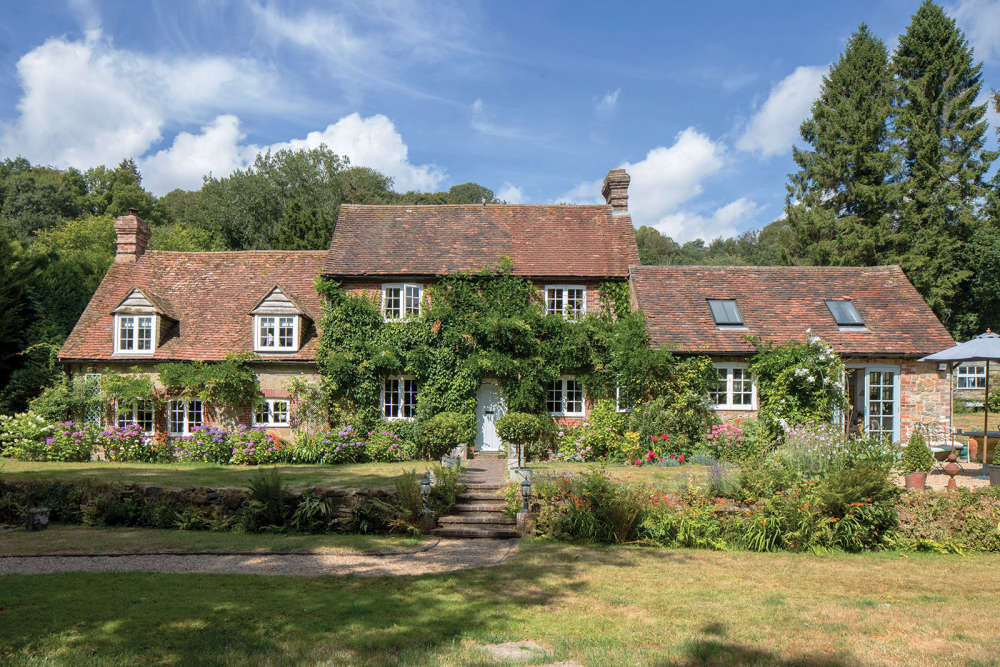
From designer florists to petrol station forecourts, cyclamen are everywhere at this time of year. They are uniquely different to other flowers – yet have become so ubiquitous, we’re in danger of forgetting how extraordinary they are, says Flo Whitaker
Cyclamen grow from peculiar round-ish shaped tubers that often have doughnut-like depressions at their centres. They bitterly resent disturbance, but can be tremendously long-lived if planted into ‘quiet’ places in the border. Moist, humus-rich soil in light shade suits them best, making them ideal candidates for a woodland effect; dotted around deciduous shrubs and spring-flowering bulbs.
These prolific self-sowers bear curious globe-shaped seed pods on coiled stems that resemble watch springs. Seedlings can pop up in unexpected places; often a considerable distance from where you originally planted the tubers, inviting the question ‘How did they get there?’ The mighty power of ants is the answer. Cyclamen seeds are coated in a sugary substance that ants find irresistible and carry away to enjoy. Once they’ve feasted on their sugar hit, the ants discard the unwanted seeds – and a seedling may result.

Hardy forms of cyclamen can mostly be divided into two groups. C. hederifolium blooms from late summer to October-ish, with ‘solo’ flowers
that appear before the leaves unfurl. As winter approaches, hederifolium recedes and C. coum takes the stage, continuing the show until February / March. Both types make ground-hugging mats of foliage with elegant silvery/white ‘marbling’ accents, (they’re worth growing for their foliage alone), with flowers in shades of pink, mauve, lilac and sometimes white.
Hederifolium is the more vigorous of the two; readily colonising difficult areas, such as impoverished soil underneath mature trees – however, both forms are hardy and undemanding, so long as their tubers are not deeply planted – 5 cm maximum. Old tubers may eventually reach saucer-size and often push themselves up to the soil surface, so take care when weeding - it’s easy to damage them with a casual swipe of the hoe.

Indoor/houseplant cyclamen are available from autumn to spring. Their intense jewel-like colours make them hard to resist at Christmas time; however, they are rather specific in their requirements. Indoor types are not frost-hardy, but neither will they thrive in a cosy living room. A cool spot, such as a frost-free porch, away from radiators and sunny windowsills suits them well. If kept around 12-150C, they can remain in flower for months.
Be vigilant for Botrytis infection, (a grey fuzzy mould), usually caused by a combination of enthusiastic over-watering, poor ventilation and decayed/damp foliage. Old, damaged leaves should be quickly removed and, when watering, avoid wetting the leaves – instead stand the pot in a dish of water for 30 minutes, then allow excess water to drain away. Come spring, their natural dormancy traits will become apparent as growth slows significantly. Remove the plant to a semi-shady spot and allow the soil to dry out completely. In September, pot into fresh compost, resume watering and the flowering cycle will recommence.

 Blooming Times: Harbingers of Spring
Blooming Times: Harbingers of Spring
 Homes Extra: Home Sanctuary
Homes Extra: Home Sanctuary
 Home Style: Ancient & Modern
Home Style: Ancient & Modern
 Blooming Times: Happy Faces
Blooming Times: Happy Faces
 Homes Extra: Restore, Repair, Recycle
Homes Extra: Restore, Repair, Recycle
 Home Style: A Scandi Winter's Tale
Home Style: A Scandi Winter's Tale
 Blooming Times: Winter Wonders
Blooming Times: Winter Wonders
 Home Style: Bold, Brave & Beautiful
Home Style: Bold, Brave & Beautiful
 Blooming Times: The Answer Lies in the Soil
Blooming Times: The Answer Lies in the Soil
 Blooming Times: Heavenly Hyacinths
Blooming Times: Heavenly Hyacinths
 Legendary Builds with Phoenix Construction Services
Legendary Builds with Phoenix Construction Services
 Blooming Times: Know Your Enemy
Blooming Times: Know Your Enemy
 Bespoke Dreams from Eridge Green Kitchens
Bespoke Dreams from Eridge Green Kitchens
 10 Hot Years: iFit Fires & Flues
10 Hot Years: iFit Fires & Flues
 Home Style: Bold Type
Home Style: Bold Type
 Blooming Times: The Sky's the Limit
Blooming Times: The Sky's the Limit
 Home Style: A Better Way of Life
Home Style: A Better Way of Life
 Homes Extra: Shed Space
Homes Extra: Shed Space
 Blooming Times: Top of the Pots
Blooming Times: Top of the Pots
 Kids Zone: Get the Kids Growing
Kids Zone: Get the Kids Growing